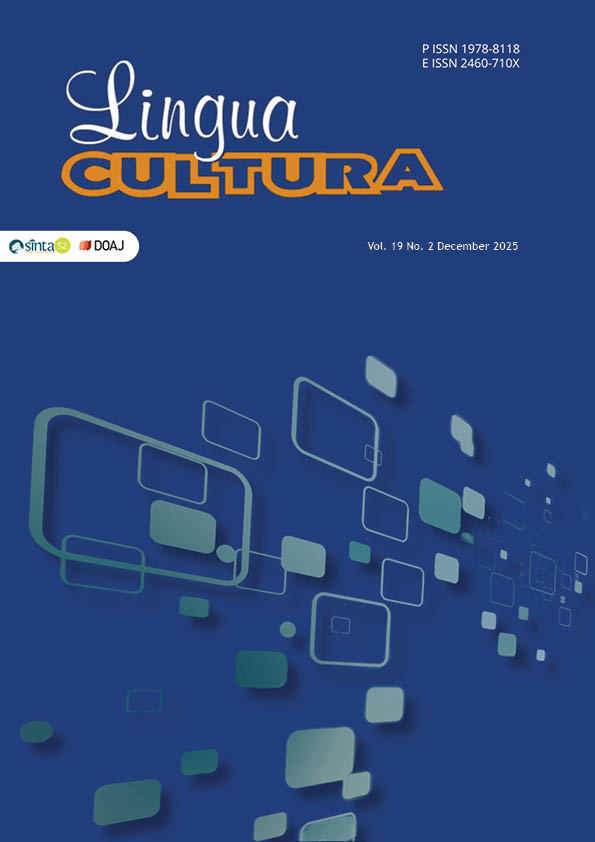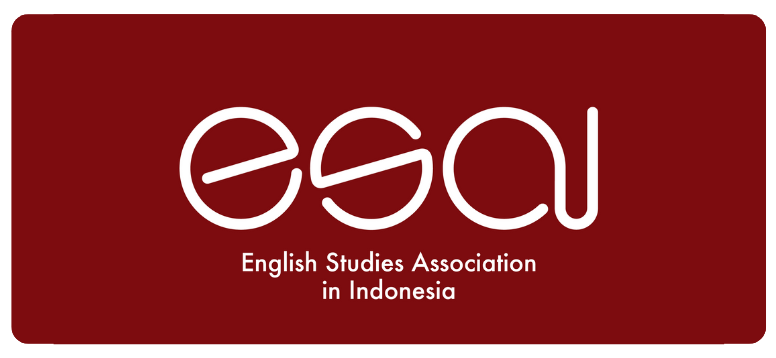Empowerment Versus Commodification: The Contradictory Representation of Women in Black Widow (2021)
Keywords:
Black Widow, Commodification, Women Empowerment, Gender Oppression, Women SuperheroesAbstract
This article aims to delve into understanding women’s representation in the film, especially regarding the issues of gender equality and women’s empowerment in a male-dominated, capitalistic industry. Women as commodities is an issue that is often found in films, and Black Widow (2021) is one of the films that brings this issue to light. In Black Widow (2021), the commodification of women is masked as empowerment. While the film portrays strong female characters, their empowerment is destabilized by the Red Room, an institution that commodifies women and transforms their bodies into instruments of violence through mind control, forced sterilization, and militarized training. The object of this study is Black Widow (2021), with a focus on the Red Room as a site of gendered oppression. The objective is to analyze how the film represents women as both empowered and exploited. This research uses qualitative feminist film analysis to understand how the film represents women’s empowerment narrative, particularly in superhero characters. This study utilizes Luce Irigaray’s “Women on the Market” as the theoretical framework to examine how female bodies are controlled, weaponized, and stripped of agency. Through the findings and analyses, it is apparent that Black Widow (2021) critiques violence against women but still supports patriarchal control over femininity.
References
Arfani, S., Juhana, J., & Hastutik, N. V. (2023). The Representation of Radical Feminism in Black Widow Movie Directed by Cate Shortland. Scope: Journal of English Language Teaching, 8(1), 218-224.
Connell, R. (2005). Masculinities (2nd ed.). Cambridge Polity. https://lulfmi.lv/files/2020/Connell_Masculinities.pdf (Original work published 1995)
DiMaggio, J. (2023). ‘You don’t feel anything?’The Cold War, family affect and reproductive politics in Black Widow. The Australasian Journal of Popular Culture, 12(1), 49-63.
Doane, M. A. (1989). The economy of desire: The commodity form in/of the cinema. Quarterly Review of Film and Video, 11(1), 23–33. https://doi.org/10.1080/10509208909361285
Foucault, M. (1995). Discipline and punish: The birth of the prison (A. Sheridan, Trans.). Vintage Books. (Original work published 1977)
Gill, R. (2008). Empowerment/sexism: Figuring female sexual agency in contemporary advertising. Feminism and Psychology, 18(1), 35–60. https://doi.org/10.1177/0959353507084950
Hidaya, N. (2023). Gender empowerment in Black Widow (2021). Litera Kultura: Journal of Literary and Cultural Studies, 10(3), 32–41. https://doi.org/10.26740/lk.v10i3.53664
Irigaray, L. (1985). This Sex Which Is Not One. Cornell University Press.
Kent, M. (2024). Beyond the Red Room: Cold War II, genre and feminism in Marvel Studios’ Black Widow. Quarterly Review of Film and Video, 42(3), 647–674. https://doi.org/10.1080/10509208.2024.2428870
Killian, K. D. (2023). An analysis of Black Widow (2021): Marvel’s most feminist film features powerful sisters and an attenuated male gaze. Journal of Feminist Family Therapy, 35(1), 106–113.
Niza, M. F. A. (2023). Feminism representation in Black Widow (2021). Litera Kultura: Journal of Literary and Cultural Studies, 11(1), 63–71.
Özüm, R. (2022). Female leads and their heroic representation: Case study of Homer’s Penelope and MCU’s Black Widow (Bachelor’s thesis, Utrecht University). Utrecht University Repository.
Ross, L., & Solinger, R. (2017). Reproductive justice: An introduction (Vol. 1). University of California Press.
Saptiadi, N. A. P., Trisnawati, R. K., & Agustina, M. F. (2022). Post-structural Feminism to Fight Kyriarchy: A Case of Black Widow (2021). Language Circle: Journal of Language and Literature, 17(1), 140-149.
Walt Disney Studios Home Entertainment. (2021). Black widow. Milano.
Published
How to Cite
Issue
Section
License
Copyright (c) 2025 Vira Farhatul Maula Somantri Putri, Putu Gayatridevi Ganti Karuni Natih, Dahlia Salsabila Ryana Putri, Nuraeni

This work is licensed under a Creative Commons Attribution-ShareAlike 4.0 International License.
Authors who publish with this journal agree to the following terms:
a. Authors retain copyright and grant the journal right of first publication with the work simultaneously licensed under a Creative Commons Attribution License - Share Alike that allows others to share the work with an acknowledgment of the work's authorship and initial publication in this journal.
b. Authors are able to enter into separate, additional contractual arrangements for the non-exclusive distribution of the journal's published version of the work (e.g., post it to an institutional repository or publish it in a book), with an acknowledgment of its initial publication in this journal.
c. Authors are permitted and encouraged to post their work online (e.g., in institutional repositories or on their website) prior to and during the submission process, as it can lead to productive exchanges, as well as earlier and greater citation of published work.
USER RIGHTS
All articles published Open Access will be immediately and permanently free for everyone to read and download. We are continuously working with our author communities to select the best choice of license options, currently being defined for this journal as follows: Creative Commons Attribution-Share Alike (CC BY-SA)



















